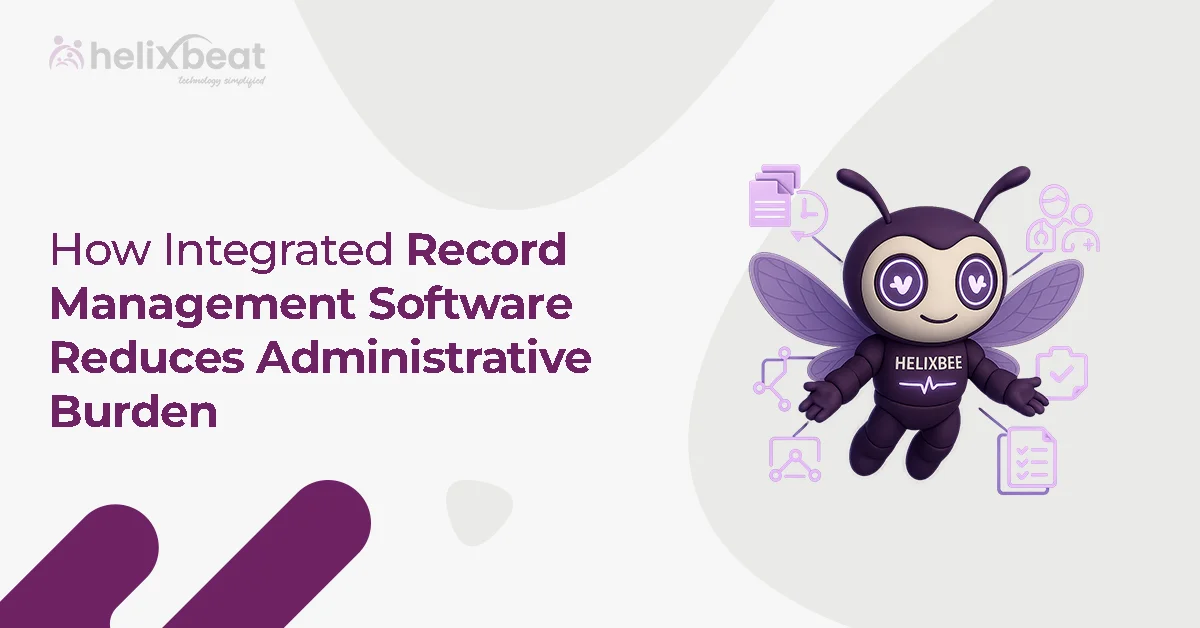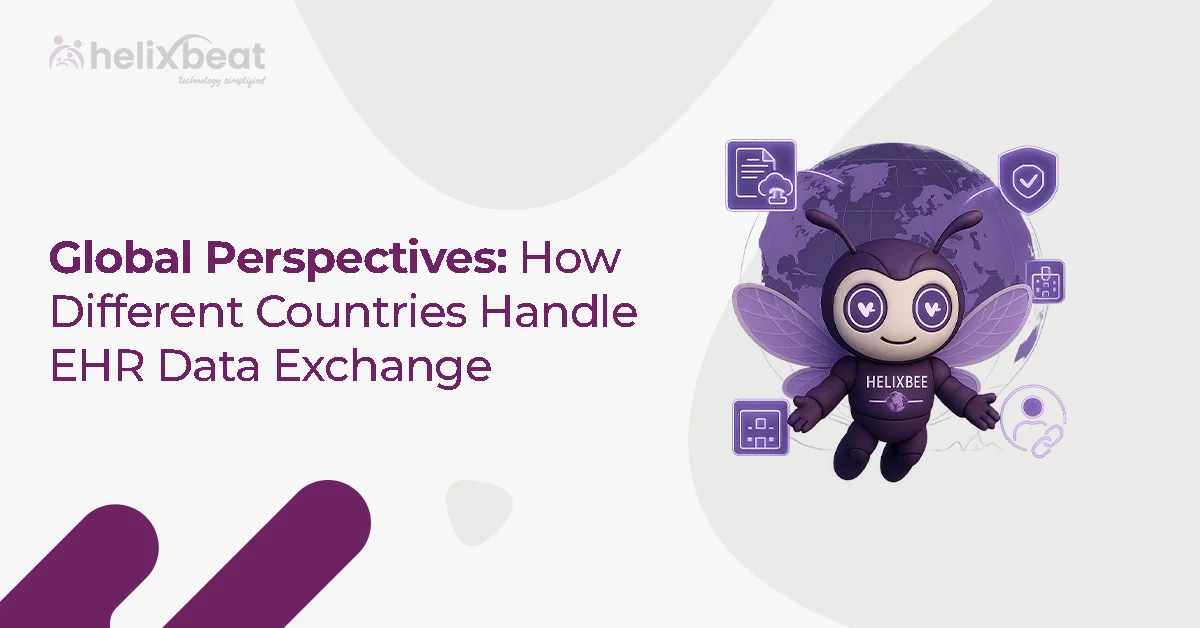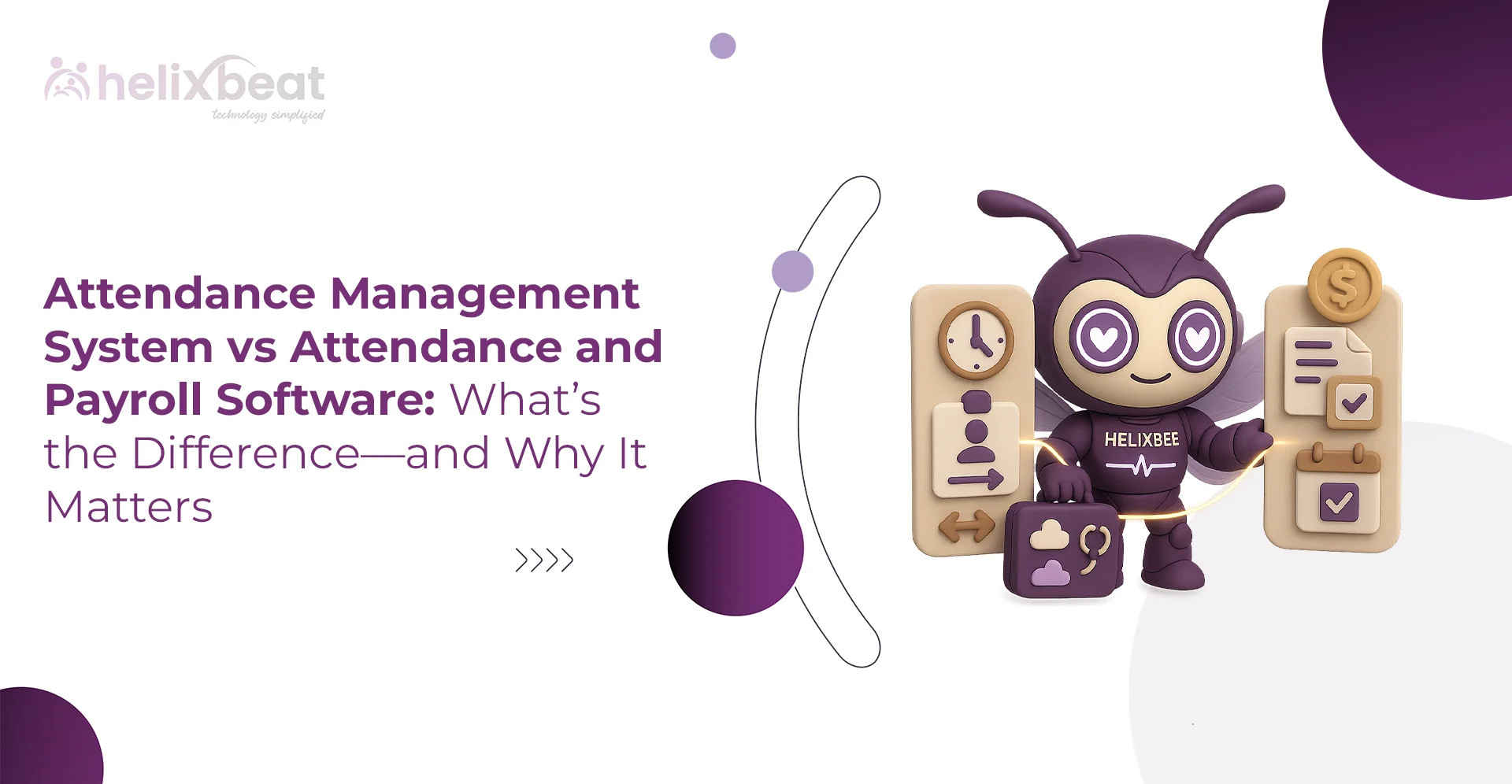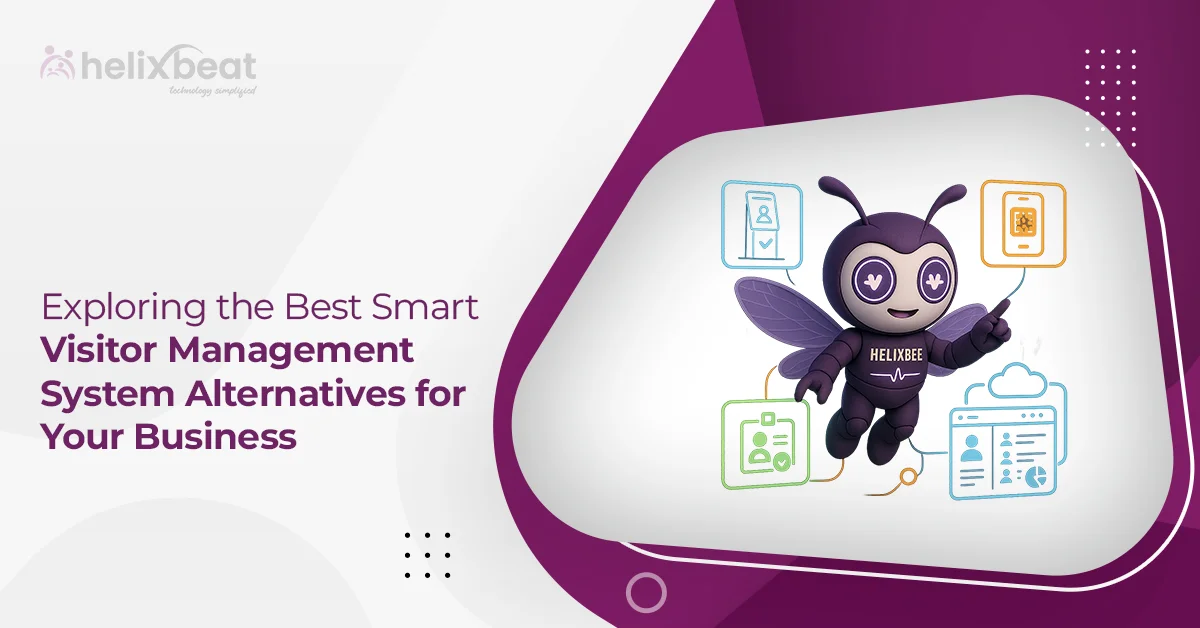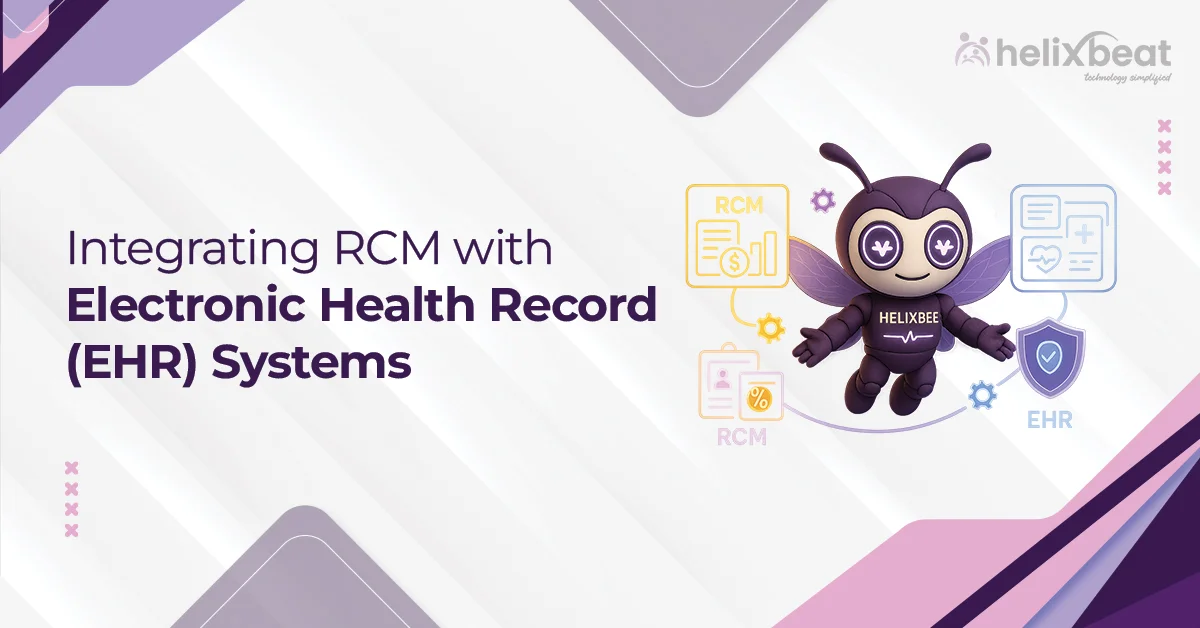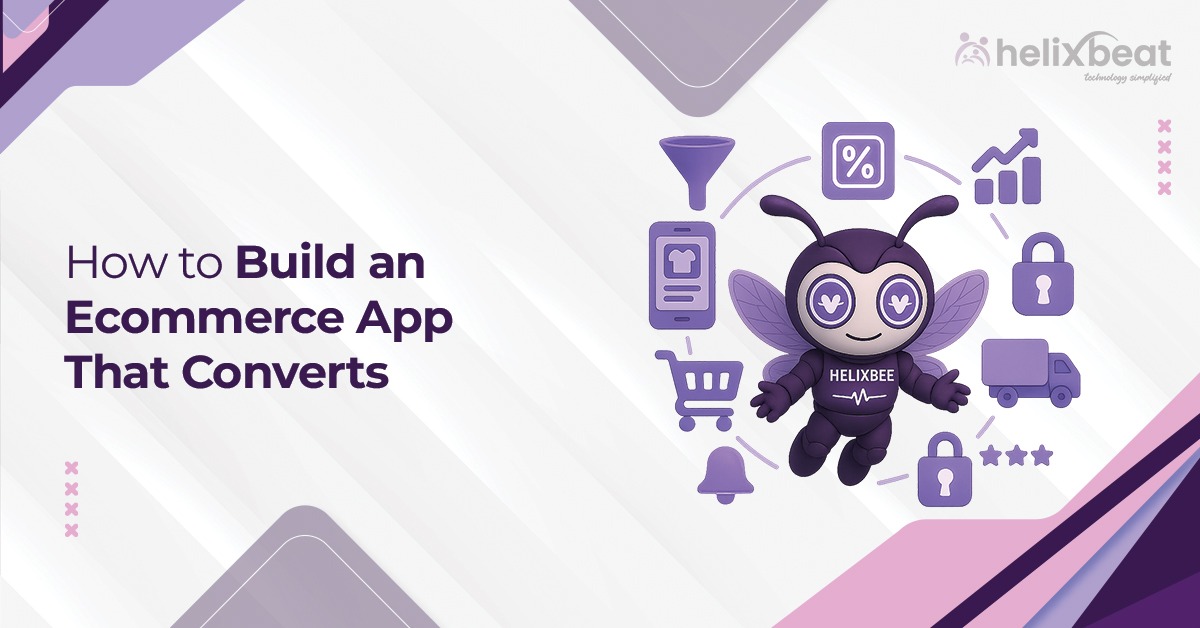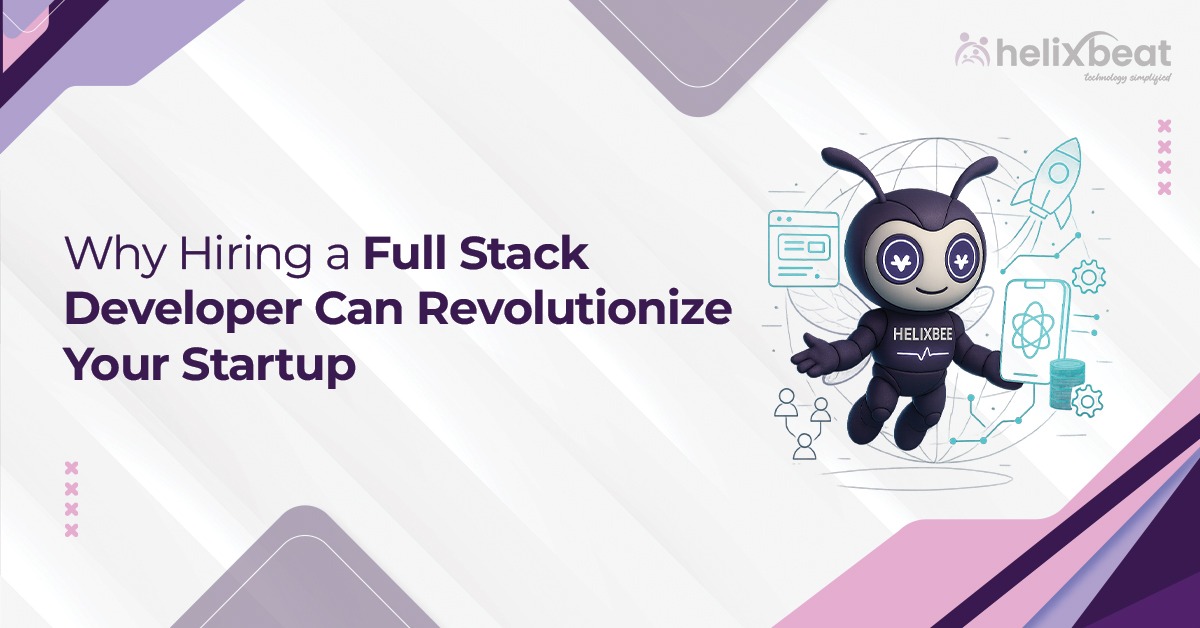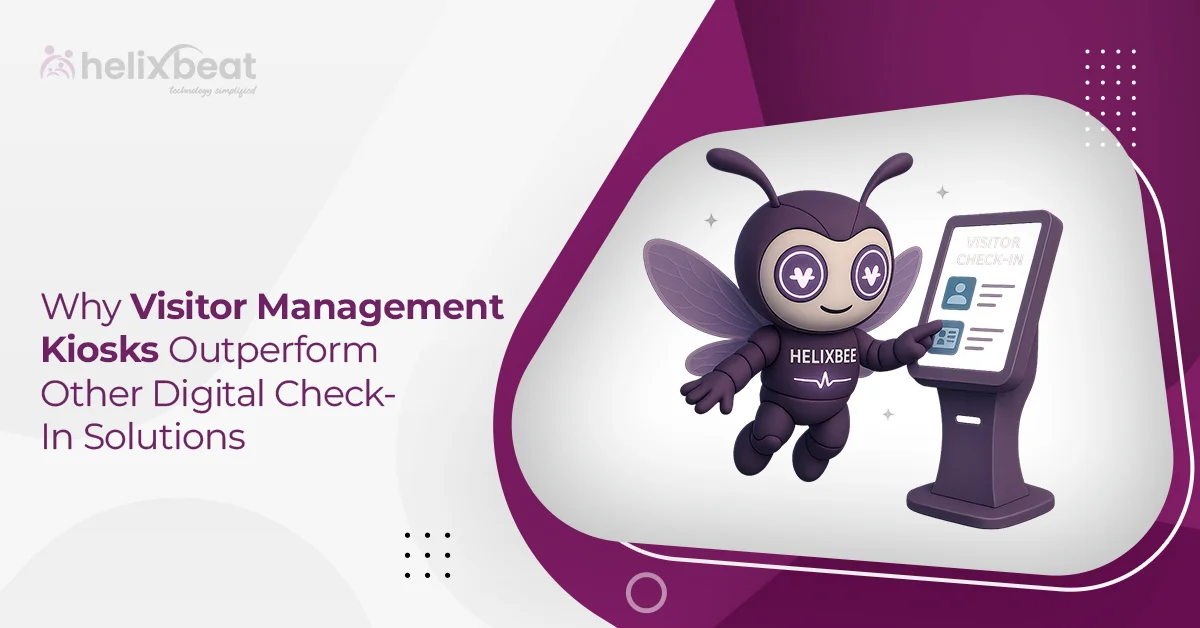Healthcare is advancing rapidly, yet one challenge remains stubbornly persistent—seamless data integration. Every day, providers, insurers, and researchers navigate oceans of patient data, but interoperability roadblocks create fragmented records, inefficiencies, and gaps in care. Electronic Health Records (EHRs) often operate in silos, making it difficult to piece together a comprehensive patient history. This is where the FHIR standard (Fast Healthcare Interoperability Resources) is a game-changer in healthcare data exchange.
In this blog, we’ll discuss how the FHIR standard optimizes connectivity, improves patient care, and enhances operational efficiency.
Table of Contents
What is the FHIR Standard?
The FHIR standard is a healthcare data exchange framework developed by HL7 (Health Level Seven). Unlike its predecessors, such as HL7 v2 and v3, FHIR is designed for modern web-based applications. It leverages RESTful APIs, which allow disparate systems to communicate effortlessly. The flexibility of FHIR supports various data formats, including JSON, XML, etc., making it highly adaptable to different technological environments.
FHIR is built on resources—modular components representing different healthcare data elements, such as patients, medications, conditions, observations, etc. These resources can be easily customized, exchanged, and stored across systems, promoting a standardized approach to healthcare data.
The Role of FHIR in Seamless Data Integration
One of the key benefits of the FHIR standard is its ability to break down data silos. Let’s explore how FHIR facilitates seamless data exchange in healthcare.
1. Interoperability Between Different Systems
Traditional healthcare systems often struggle with interoperability due to variations in data structure and exchange protocols. The FHIR standard bridges this gap by offering a uniform data model that different EHR systems, mobile applications, and research platforms can adopt.
For example, a hospital using Epic’s EHR system can integrate seamlessly with an external lab using Cerner’s software. With FHIR, these systems can exchange patient test results, prescriptions, and treatment histories without extensive customization.
2. Real-Time Data Access and Exchange
With traditional data exchange methods, retrieving patient information from different sources can be time-consuming. However, the FHIR standard introduces real-time data exchange via APIs. Therefore, healthcare providers can access up-to-date patient records instantly.
For example, if a patient visits an emergency room in a different state, the attending physician can retrieve their recent lab results and medication history from their primary care provider’s system within seconds. This capability significantly reduces treatment delays and improves decision-making.
3. Enhanced Patient Engagement
The modern patient expects easy access to their health records, similar to how they access banking or shopping apps. The FHIR standard makes patient portals and mobile health apps more efficient by enabling secure access to personal medical data.
For example, a diabetes patient can use a patient portal to track blood sugar levels, medication schedules, and doctor’s appointments. This level of access empowers patients to take an active role in managing their health.
4. Supporting Value-Based Care Models
Healthcare is shifting from volume-based care to value-based care, where patient outcomes determine reimbursement. To make this shift successful, providers need integrated data on patient progress, adherence to treatment, and clinical outcomes. The FHIR standard helps consolidate this data from multiple sources, allowing payers and providers to track performance more accurately.
For example, an Accountable Care Organization (ACO) can use FHIR to compile data from hospitals, clinics, and home healthcare providers to assess whether a patient is responding well to post-surgical rehabilitation.
5. Scalability and Adaptability
Unlike legacy interoperability standards that require extensive customization, FHIR is highly scalable. Organizations can integrate it with existing EHR systems without overhauling their entire infrastructure. This adaptability allows hospitals, small clinics, and research institutions to adopt FHIR incrementally.
For example, a regional hospital network may initially use a FHIR-based solution like AERIS for data sharing between departments and later expand its implementation to include telehealth services, remote patient monitoring, and AI-driven analytics.
6. Advancing Healthcare Research and AI
The structured format of FHIR supports AI-driven analytics, which helps facilitate predictive insights and personalized treatment recommendations. As a result, researchers can aggregate and analyze large datasets without worrying about inconsistent data formats.
For example, a pharmaceutical company developing a new cardiovascular drug can use FHIR-enabled data sharing to gather real-world evidence from various hospitals and compare patient responses across demographics. This can accelerate research timelines and enhance drug efficacy studies.
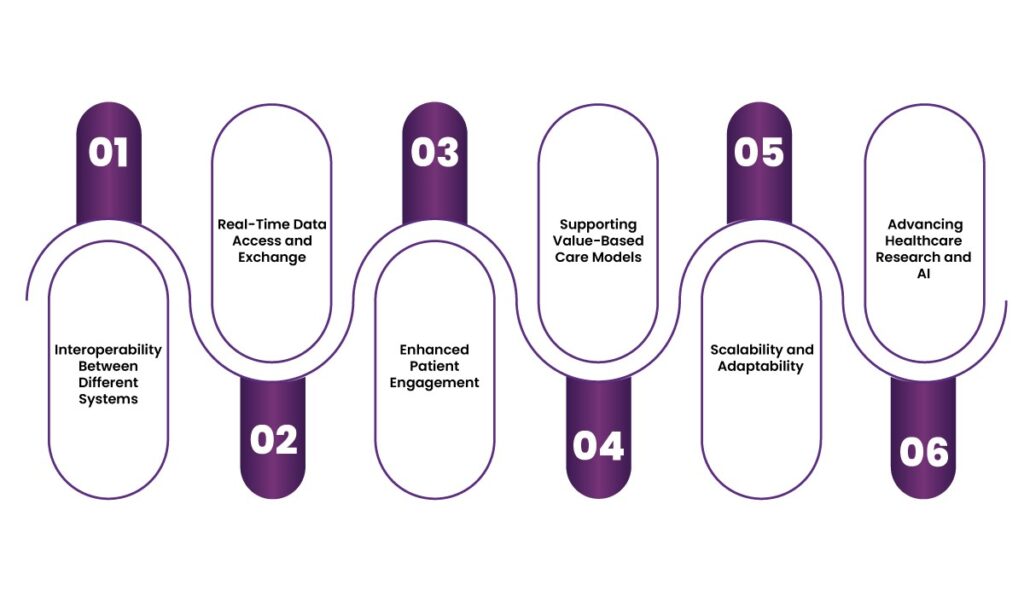
Future of FHIR Adoption
Despite its advantages, healthcare organizations may face resistance due to legacy system dependencies, regulatory constraints, and the cost of implementation. However, government initiatives like the U.S. ONC’s 21st Century Cures Act are accelerating FHIR adoption by mandating interoperability standards for patient data access.
The future of FHIR looks promising, with advancements in AI-driven clinical decision support, DLT-based security, and predictive analytics. As more stakeholders embrace the FHIR standard, the vision of a fully integrated, patient-centric healthcare ecosystem moves closer to reality.
How FUSION Helps Hospitals and Clinics Integrate the FHIR Standard
1. Connecting Internal Systems
FUSION integrates various hospital systems and creates a unified view of patient data in real-time. This eliminates manual data entry across multiple platforms.
2. Standardizing Lab Results for Quicker Decision-Making
FUSION converts laboratory data into FHIR-compatible formats. Therefore, healthcare providers can make well-informed decisions with immediate access to standardized lab results.
3. Simplifying Insurance Compliance
The Centers for Medicare & Medicaid Services (CMS) mandate the use of interoperable systems that enable seamless communication between healthcare providers, insurers, and regulatory agencies.
FUSION aligns with these regulations, optimizing insurance workflows by facilitating accurate and timely data exchange. This helps reduce administrative burdens, accelerate claim processing, and improve cash flow for healthcare facilities.
4. Strengthening Data Sharing with Healthcare Partners
FUSION serves as a centralized hub for patient information, enabling secure and efficient data sharing across the entire healthcare network. By removing technical barriers, it boosts collaboration, improves provider coordination, and lowers operational costs.
5. Future-Proofing Healthcare Systems
FUSION lays the groundwork for next-generation healthcare innovations, supporting AI-driven insights, predictive modeling, and IoT integration. By harnessing real-time data analytics, healthcare providers can refine clinical decision-making, enhance operational efficiency, and adopt a proactive approach to patient care.
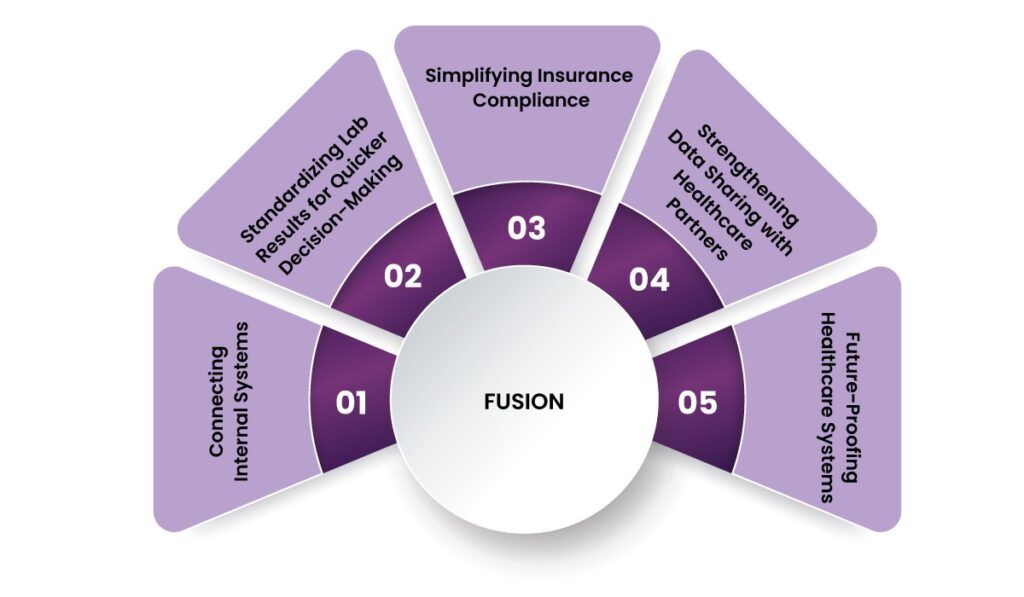
Final Thoughts
The FHIR standard is revolutionizing healthcare data integration by offering a flexible, scalable, and patient-centered approach. While challenges remain, ongoing regulatory support and technological innovation will continue to drive FHIR adoption, ultimately leading to improved healthcare outcomes worldwide.
Unlock the full potential of FHIR integration with FUSION. Whether you’re looking to streamline data exchange, enhance interoperability, or improve patient care, FUSION provides the tools and expertise to make it happen. Contact us today to discover how FUSION can transform your healthcare operations.
FAQs
1. What is the FHIR standard in healthcare?
The FHIR (Fast Healthcare Interoperability Resources) standard is a data exchange framework developed by HL7 that allows healthcare systems to share patient information using modern web-based technologies like RESTful APIs.
2. How does the FHIR standard improve interoperability?
FHIR provides a uniform data model that enables different electronic health record (EHR) systems, mobile apps, and research platforms to exchange data seamlessly, reducing inefficiencies and data silos.
3. How does FUSION help hospitals integrate FHIR?
FUSION connects disparate hospital systems, standardizes lab results, streamlines insurance compliance, and enhances data sharing across healthcare networks, making FHIR adoption smoother.
4. What role does FHIR play in value-based care?
By consolidating data from multiple sources, FHIR helps providers track patient progress, treatment adherence, and clinical outcomes, which are essential for value-based care reimbursement models.
5. How does FHIR support patient engagement?
FHIR enables secure access to personal medical records through patient portals and mobile health apps, allowing individuals to track their health data, manage medications, and schedule appointments conveniently.





